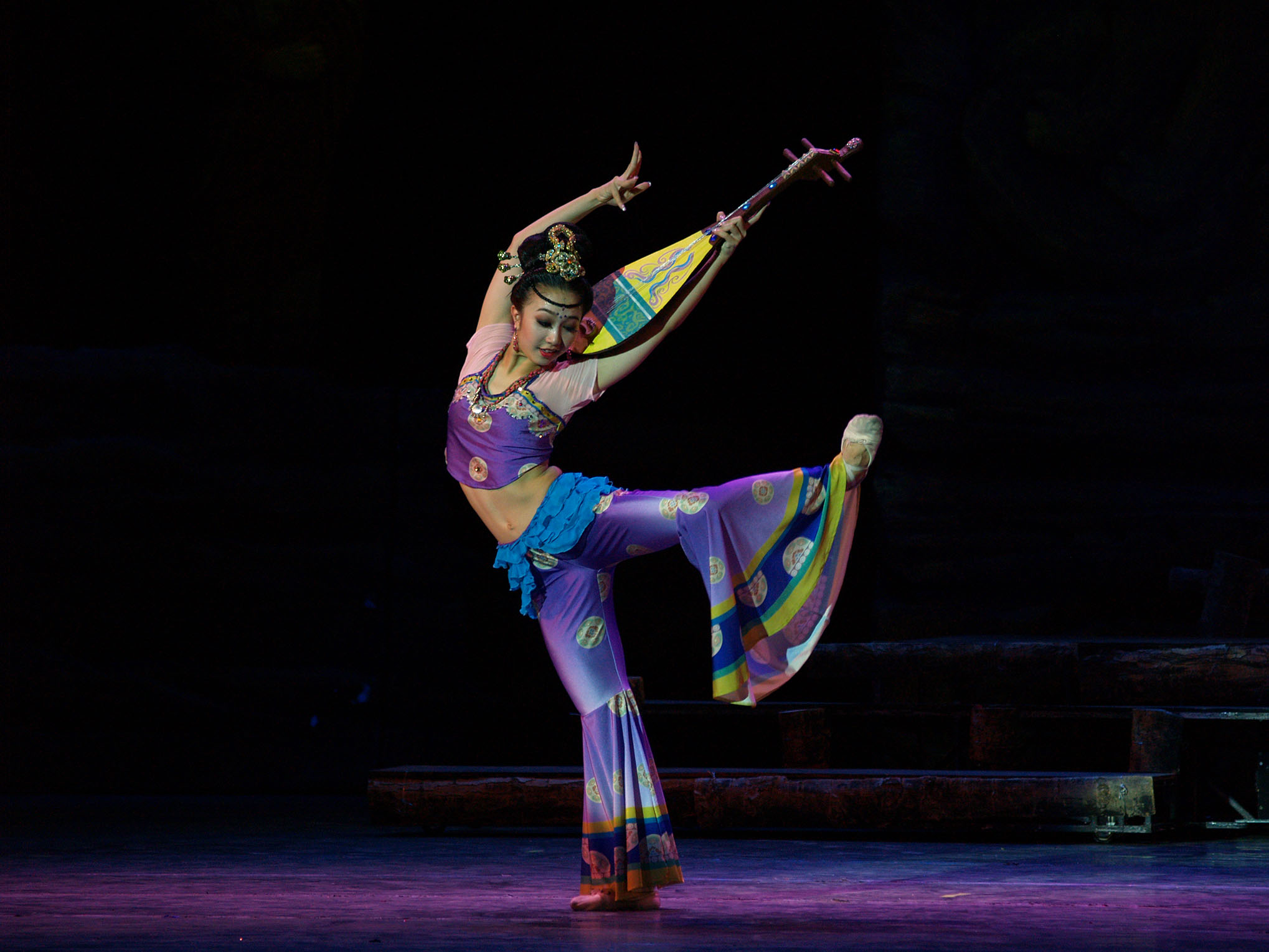The city of Dunhuang in north-western Gansu province of China was a major stop on the ancient Silk Road. An oasis city, it was an important hub for trade and cultural exchange, a meeting point between the civilisations of Asia, India, Europe and the Islamic world. It is perhaps most famous for the Mogao Caves, a complex system of Buddhist temples outside the city, a wondrous cache of art and literature. The so-called Library Cave – walled off in the 11th century and rediscovered in the 20th – was found to contain everything from folks songs and government records to Buddhist, Confucian, Taoist and even Nestorian Christian texts, with manuscripts in languages from Chinese to Hebrew. Most famous of all, however, are the beautiful and elaborate murals that cover the walls of the Mogao caves, dating across a period of over a thousand years.
 Gansu Dance Troupe’s The Legend of Dunhuang. Photo: supplied
Gansu Dance Troupe’s The Legend of Dunhuang. Photo: supplied
It is these murals that were the starting point for the Gansu Dance Troupe’s The Legend of Dunhuang, which makes its Australian debut in September and October. “[The Legend of Dunhaung] is a colourful, vibrant depiction of an ancient...










Comments
Log in to join the conversation.